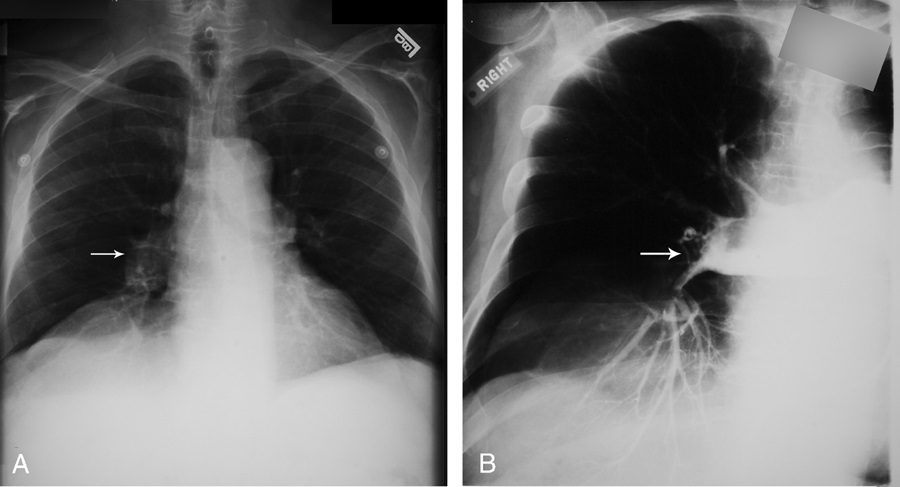
Source
Signs in Thoracic Imaging
Journal of Thoracic Imaging21(1):76-90, March 2006.
Felix Fleischner was a German-born radiologist who immigrated to the United States during the second World War.39 The finding that bears his name refers to enlargement of the proximal pulmonary arteries on plain chest radiography (Fig. 12A) or angiography (Fig. 12B) secondary to pulmonary embolism.40,41 This occurs most commonly in the setting of massive pulmonary embolism (defined angiographically as involving 50% or more of the major pulmonary artery branches)42 and has a relatively low sensitivity in diagnosis.43 The enlargement can be caused by massive embolus enlarging the luminal diameter of the proximal artery in the acute setting but can also be seen in the subacute to chronic setting due to elevated pressures in the pulmonary arterial circulation.44 An important ancillary finding is the abrupt tapering of the occluded pulmonary artery distally, creating the “knuckle sign.”44
